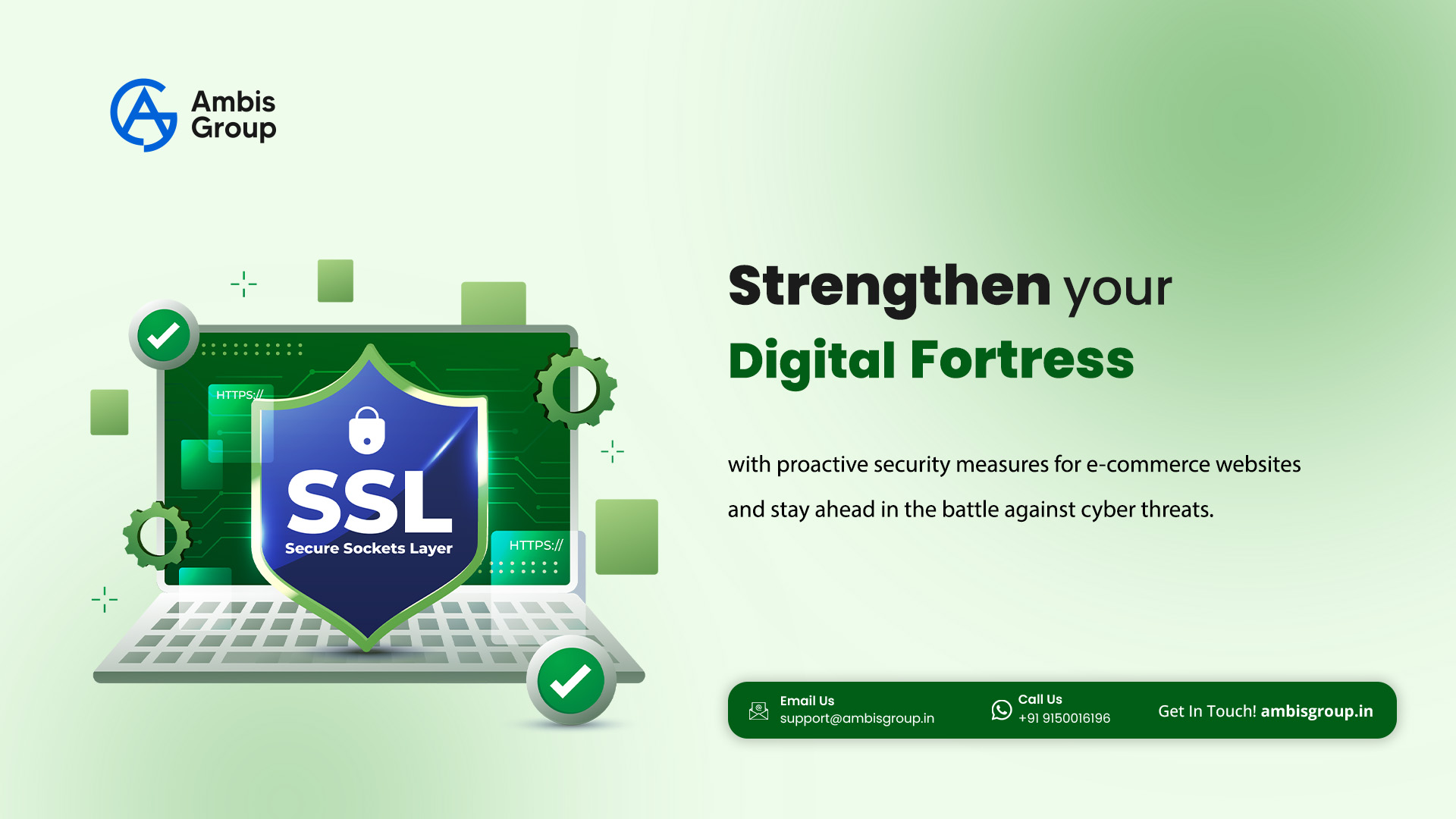Security Measures for E-commerce Websites

Security Measures for E-commerce Websites
With the exponential growth of e-commerce, ensuring the security of your online store has never been more critical. Cyber attackers are always refining their strategies to capitalize on vulnerabilities and abscond with critical and sensitive customer information. In this comprehensive guide, we'll delve into essential security measures that e-commerce websites must implement to protect against data breaches, fraud, and other cyber threats.
SSL/TLS Encryption:
Secure Sockets Layer (SSL) and Transport Layer Security (TLS) encryption are fundamental for establishing a secure connection between web browsers and servers. Here's what you need to know:
- Implement SSL/TLS certificates to encrypt data transmitted between users and your website.
- Ensure your website uses HTTPS protocol to indicate a secure connection, visible through a padlock icon in the browser's address bar.
- Regularly renew SSL/TLS certificates and configure servers to prioritize strong encryption algorithms.
PCI DSS Compliance:
Compliance with the Payment Card Industry Data Security Standard (PCI DSS) is mandatory for e-commerce websites that handle credit card transactions. Follow these steps to achieve PCI DSS compliance:
- Adhere to PCI DSS requirements, which include maintaining a secure network, protecting cardholder data, implementing access controls, conducting regular security testing, and maintaining an information security policy.
- Work with PCI-compliant payment gateways and service providers to securely process credit card transactions.
- Undergo regular PCI DSS assessments and audits to validate compliance and address any identified vulnerabilities.
Regular Software Updates:
Keeping your e-commerce platform, content management system (CMS), plugins, and extensions up to date is crucial for addressing security vulnerabilities. Follow these best practices:
- Enable automatic updates for software whenever possible to ensure prompt installation of security patches.
- Monitor security advisories and vulnerability databases for your software stack and apply patches promptly.
- Test software updates in a staging environment before deploying them to the production website to avoid compatibility issues.
Strong Password Policies:
Enforcing strong password policies for user accounts is essential for preventing unauthorized access. Consider the following recommendations:
- Enforce the guideline for users to generate robust passwords consisting of both uppercase and lowercase letters, numbers, and special characters.
- Implement multi-factor authentication (MFA) to add an extra layer of security by requiring users to verify their identity using a second factor, such as a one- time code sent via SMS or email.
- Educate users about the importance of password hygiene, including regularly updating their passwords and avoiding common passwords.
Firewalls and Intrusion Detection Systems (IDS):
Deploying firewalls and intrusion detection systems (IDS) helps detect and prevent unauthorized access and malicious activities. Here's what you should do:
- Install and configure firewalls to monitor and filter incoming and outgoing traffic based on predefined rules.
- Implement intrusion detection systems to analyze network traffic and detect suspicious behavior or patterns indicative of potential cyber threats.
- Regularly review firewall logs and IDS alerts to identify security incidents and take appropriate action to mitigate risks.
Secure Hosting Environment:
Choosing a reputable hosting provider and securing the hosting environment are crucial for protecting your e-commerce website. Follow these guidelines:
- Select a hosting provider that offers robust security features, including firewalls, intrusion detection/prevention systems, regular backups, and distributed denial-of-service (DDoS) protection.
- Opt for a hosting plan that supports secure protocols such as SFTP (Secure File Transfer Protocol) for file transfers and SSH (Secure Shell) for remote server access.
- Configure server settings, file permissions, and access controls to restrict unauthorized access and minimize the risk of security breaches.
Regular Security Audits and Penetration Testing:
Conducting regular security audits and penetration testing helps identify and address vulnerabilities proactively. Follow these steps:
- Perform comprehensive security audits to assess the security posture of your e- commerce website, including infrastructure, codebase, configurations, and user permissions.
- Conduct penetration testing (pen testing) to simulate real-world cyber- attacks and evaluate the effectiveness of your security controls in defending against them.
- Document and prioritize security findings based on their severity and potential impact on your e-commerce operations, and implement remediation measures accordingly.
Protecting your e-commerce website from security threats requires a multi-layered approach encompassing encryption, compliance, software updates, password policies, firewalls, secure hosting, and proactive security testing. By implementing these essential security measures and staying vigilant against emerging threats, you can safeguard your online store, protect sensitive customer data, and maintain trust and confidence among